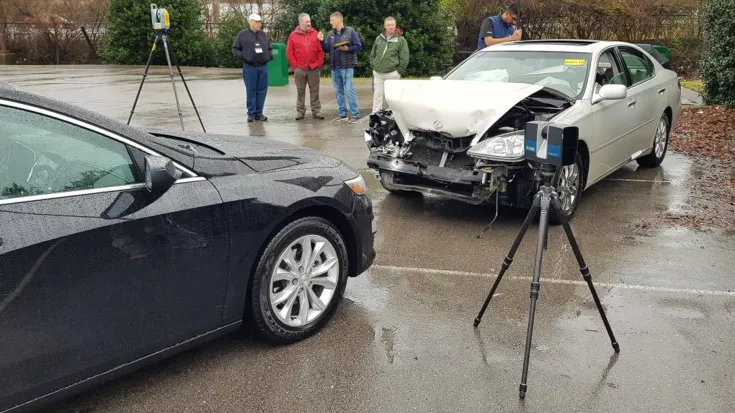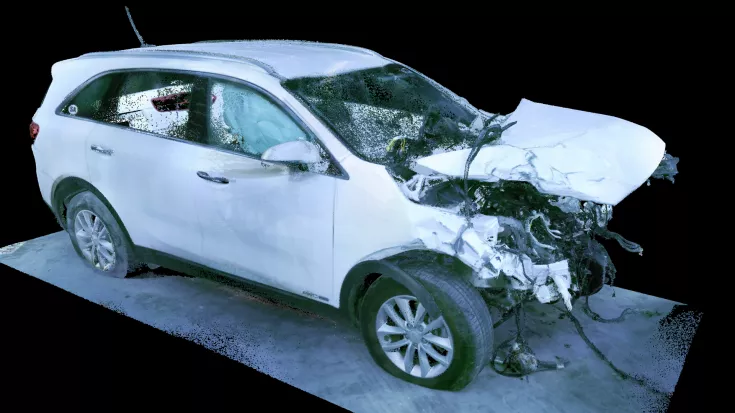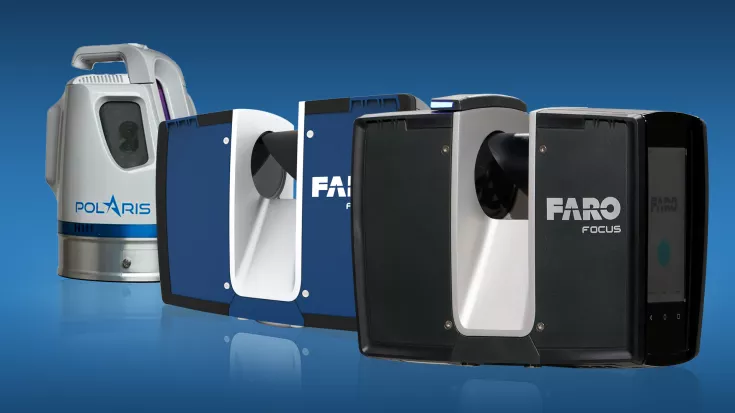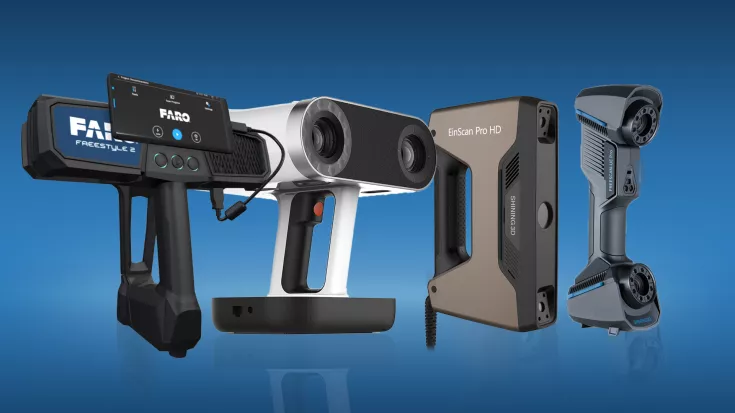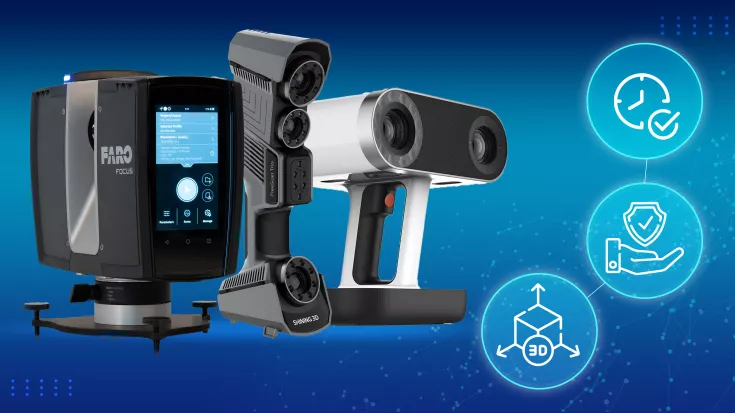3D Laser Scanners for Accident Reconstruction

TitlePrecision & efficiency in accident investigation
Accident reconstruction is an important part of accident investigation and plays a central role in determining the causes of accidents and the legal clarification of traffic accidents.
The use of 3D laser scanners has proven its worth in this area. These high-precision devices make it possible to record accident locations and vehicles involved in detail in the shortest possible time and depict them in a digital 3D model. This not only makes it easier to reconstruct the course of the accident, but also to preserve evidence and analyze accident scenarios.
TitlePrecise documentation of the accident scene
In the event of a traffic accident, it is crucial to document the scene of the accident in as much detail and accuracy as possible. Traditional methods, such as manual surveying or photography, can be useful but do not offer the accuracy and completeness that a 3D laser scanner provides.
Terrestrial scanners can scan the entire accident site in just a few minutes and generate a point cloud that represents the entire area in 3D. The 3D scanner captures all relevant details without having to block the accident site for a long time.
The scan data enables precise measurement of distances between objects, tracks on the road, damage to vehicles and much more. With the help of realistic 3D models, complex accident sequences can be made comprehensible – ideal for legal proceedings or insurance claims.
TitleReconstruction of the accident sequence
A major advantage of 3D data is that it can be used to virtually reconstruct the course of an accident. With the help of the information collected, experts can reconstruct movement sequences, collision points and even the speed of the vehicles involved.
This provides valuable insights into the cause of the accident and enables a well-founded analysis of the course of events that goes beyond what would be possible from eyewitness reports or simple photos alone.
TitleCourt-proof preservation of evidence
The 3D data generated by laser scanners provides an objective and unalterable representation of the accident site. They provide a tamper-proof basis for subsequent analysis.
The data can be used by both investigators and courts to analyze the circumstances of the accident and clarify discrepancies in witness statements. Particularly in complex accidents involving several vehicles or other obstacles, 3D laser scanners provide a clear and comprehensive view of what happened.
The digital documentation can be reviewed and re-analyzed at any time later, without having to take into account changing factors such as weather influences or subsequent damage.
TitleDifferent scanner technologies
Terrestrial laser scanner
Terrestrial 3D laser scanners are mounted on a tripod. These scanners are particularly suitable for capturing large areas quickly and with maximum accuracy. You can set up the laser scanner in different positions and scan the entire accident scene from different perspectives.
The scan data provides detailed information about the surroundings, road conditions, vehicles and other relevant objects. Such a scanning process usually only takes a few minutes and captures several million data points, which can later be merged into a comprehensive 3D model.
Handheld 3D scanner
Handheld scanners are portable devices that are particularly suitable for the detailed capture of small to medium-sized areas, such as damage to vehicles or specific traces at the scene of an accident. They are flexible to use and allow for precise scanning of hard-to-reach areas.
Handheld scanners are particularly useful when very specific details need to be captured that are important for reconstructing the course of the accident. Handheld scanners are often used in addition to terrestrial scanners to ensure complete and detailed documentation.
TitleThe process: it's that easy
- Scanning of the accident site:
Capture the accident scene with state-of-the-art 3D laser scanners and ensure that all relevant details are documented. - Data processing & modeling:
The scanned point clouds are processed into high-precision 3D models and optimized for further processing. - Analysis & simulation:
Using state-of-the-art software, you can visualize the course of the accident and create simulations for accident reconstruction.
TitleBenefits of 3D laser scanner technology
The use of 3D laser scanners in accident reconstruction offers numerous advantages over conventional methods:
- Time saving: with a laser scanner, the entire accident scene can be fully captured in just a few minutes. This significantly reduces the time investigators have to spend on site.
- Accuracy: The data generated by the scanners is extremely precise and provides an exact representation of the accident scene and all objects involved. This accuracy is crucial for reconstructing the course of events and determining the cause of the accident.
- Repeatable analyses: As the 3D data is stored digitally, it can be analyzed again at any time, even long after the accident. This is particularly useful if new questions or doubts arise in the course of the investigation.
- Objectivity: The models generated by the scanners are free from human error or subjective perceptions and provide an unbiased representation of the accident scene - the ideal basis for legal proceedings.
